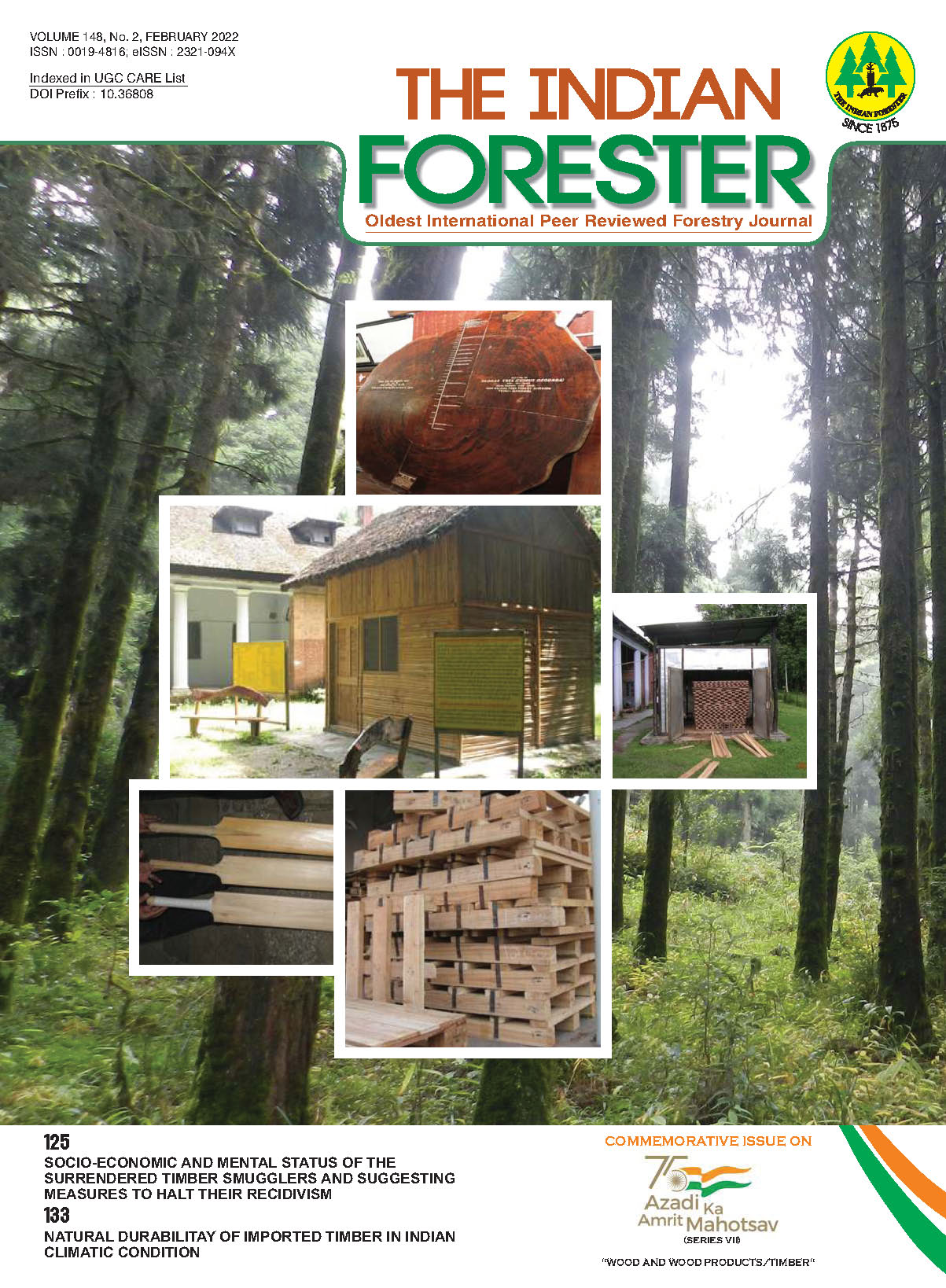Efficacy of Fumigants for Control of Sal Seed and Seedling Borer Pammene theristis Meyrick (Lepidoptera: Tortricidae)
DOI:
https://doi.org/10.36808/if/2022/v148i2/155012Keywords:
Sal Seeds, Seed Borer, Pammene theristis, Fumigation, Fumigants.Abstract
Sal (Shorea robusta Gaertn.) is one of the most important timber species of Indian sub-continent. Along with timber, Sal seeds are of great commercial importance. The quality of seed production and seed viability are affected by insect infestation on tree stands and during storage which causes considerable economic loss. Pammene theristis Meyrick is the most destructive pest, which bores both the seeds and seedlings of Sal. Fumigation is an effective management method of suffocating or poisoning the seed borers within the seed and thus controlling the infestation. A laboratory study was carried out in Insectary, Forest Research Institute, Dehradun. The results revealed that the most effective fumigant against the seed borer P. theristis was found to be EDB + CCl4 at 0.2 ml/kg dose for 48 hours. It was followed by EDB (at 0.2 ml/kg), PDCB (at 0.2 ml/kg) and CS2 (at 0.2 ml/kg) at 48 hours duration each.References
Berck B. (1958). Distribution and persistence of fumigant mixtures applied to grain. Proceedings of 10th International Congress on Entomology, 4: 99-103.
Chitale V.S. and Behera M.D. (2012). Can the distribution of Sal (Shorea robusta Gaertn. f.) shift in the north-eastern direction in India due to changing climate? Current science, 102 (8): 1126-1135.
Gautam K.H. (1990). Regeneration status of Sal (Shorea robusta) forests in Nepal. Department of Forest Nepal, Kathmandu, 11 pp.
Joshi K. (2011). Chemosystematics and Indigenous Uses of Shorea in South Asia. International Journal of Pharma and Bio Sciences, 2(3): 1-13.
Kumar C.S., Pradhan R.C., Ghosh P., Rana S.S. and Mishra S. (2015). Shorea robusta (Dipterocarpaceae) seed and its oil as food. International Journal of Food and Nutritional Sciences, 4(4): 228-233.
Monroe H.A.U. (1969). Manual of fumigation for insect control. Food and Agriculture Organisation, Rome, 381.
Orwa C., Mutua A., Kindt R., Jamnadass R. and Anthony S. (2009). Agroforestree Database: a tree reference and selection guide version 4.0. World Agroforestry Centre, Kenya.
Pali H.S. and Kumar N. (2014). Biodiesel production from Sal (Shorea robusta) seed oil. NIET Journal of Engineering and Technology, 5: 24-29.
Sharma M. (2019). Biology and management of Sal seed and seedling borer Pammene theristis Meyrick (Lepidoptera: Tortricidae). Thesis, 148 pp.
Singh V., Dwivedi V., Singh S. and Pandey A. (2014). Potential of Sal (Shorea robusta Gaertn.f) seeds for enterprise development in Central India: an overview. E-Journal of Applied Forest Ecology, 2 (1): 34-39.
Tewari D.N. (1995). A monograph on Sal (Shorea robusta Gaertn. f.). International Book Distributors, Dehradun, India. 277 pp.
Viel G. and Catelot-Goldman C. (1957). Efficacite'sur ceratitis capitata wied de fumigation des p^eches au dibromoethane. Phytiatr. Phytopharm, 6: 1517.
Downloads
Downloads
Published
How to Cite
Issue
Section
License
Unless otherwise stated, copyright or similar rights in all materials presented on the site, including graphical images, are owned by Indian Forester.





